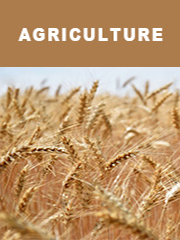TOP CATEGORY: Chemicals & Materials | Life Sciences | Banking & Finance | ICT Media

Download Report PDF Instantly
Report overview
The global Grain and Cereal Crop Protection market was valued at US$ 32440 million in 2022 and is projected to reach US$ 43000 million by 2029, at a CAGR of 4.1% during the forecast period. The influence of COVID-19 and the Russia-Ukraine War were considered while estimating market sizes.
Crop protection is the subject of dealing with plant science and practice of managing plant diseases, weeds and other pests that damages crop and forestry which leads to decrease in crop production.
This report aims to provide a comprehensive presentation of the global market for Grain and Cereal Crop Protection, with both quantitative and qualitative analysis, to help readers develop business/growth strategies, assess the market competitive situation, analyze their position in the current marketplace, and make informed business decisions regarding Grain and Cereal Crop Protection. This report contains market size and forecasts of Grain and Cereal Crop Protection in global, including the following market information:
The escalating global population contributes to the pressure to increase cereal production, which leads to a proliferation of pesticide usage. Grains and cereals are a major consumer of crop-based as well as non-crop-based pesticides, particularly herbicides, which are a rapidly developing category. For the past few years, the global agricultural industry has been witnessing significant changes in terms of advancements in crop protection, drip irrigation, soil management, farming techniques, and enhancement of crop yields by means of herbicides, pesticides, the GM technology, fungicides, and other advanced techniques. Farms extensively employed the crop rotation method in order to protect the crops and maintain the level of nutrients in the soil. Soil fertility, soil erosion, and crop yield are augmented via this technique. It also helps mitigate the problem of pest attack which often occurs in a field engaged in incessant farming of the same crop. However, crop protection chemicals have also been observed to have an adverse effect on the environment and human health. Additionally, the nutritional levels of soil are affected by excess use of these products which decrease its productivity prospects. In terms of type, the grain and cereal crop protection market is categorized into insecticides, herbicides, and fungicides, among which herbicides are the dominant segment. This trend is expected to continue over the forecast period, on account of the wide utilization of herbicides as a crop protection chemical because of their low cost, as well as increased research and development investments in the field and the introduction of new herbicidal active ingredients.
We surveyed the Grain and Cereal Crop Protection manufacturers, suppliers, distributors and industry experts on this industry, involving the sales, revenue, demand, price change, product type, recent development and plan, industry trends, drivers, challenges, obstacles, and potential risks.
Total Market by Segment:
Global Grain and Cereal Crop Protection Market, by Type, 2018-2023, 2024-2029 ($ Millions) & (K Units)
Global Grain and Cereal Crop Protection Market Segment Percentages, by Type, 2022 (%)
Global Grain and Cereal Crop Protection Market, by Application, 2018-2023, 2024-2029 ($ Millions) & (K Units)
Global Grain and Cereal Crop Protection Market Segment Percentages, by Application, 2022 (%)
Global Grain and Cereal Crop Protection Market, By Region and Country, 2018-2023, 2024-2029 ($ Millions) & (K Units)
Global Grain and Cereal Crop Protection Market Segment Percentages, By Region and Country, 2022 (%)
Competitor Analysis
The report also provides analysis of leading market participants including:
Further, the report presents profiles of competitors in the market, key players include:
Outline of Major Chapters:
Chapter 1: Introduces the definition of Grain and Cereal Crop Protection, market overview.
Chapter 2: Global Grain and Cereal Crop Protection market size in revenue and volume.
Chapter 3: Detailed analysis of Grain and Cereal Crop Protection manufacturers competitive landscape, price, sales and revenue market share, latest development plan, merger, and acquisition information, etc.
Chapter 4: Provides the analysis of various market segments by type, covering the market size and development potential of each market segment, to help readers find the blue ocean market in different market segments.
Chapter 5: Provides the analysis of various market segments by application, covering the market size and development potential of each market segment, to help readers find the blue ocean market in different downstream markets.
Chapter 6: Sales of Grain and Cereal Crop Protection in regional level and country level. It provides a quantitative analysis of the market size and development potential of each region and its main countries and introduces the market development, future development prospects, market space of each country in the world.
Chapter 7: Provides profiles of key players, introducing the basic situation of the main companies in the market in detail, including product sales, revenue, price, gross margin, product introduction, recent development, etc.
Chapter 8: Global Grain and Cereal Crop Protection capacity by region & country.
Chapter 9: Introduces the market dynamics, latest developments of the market, the driving factors and restrictive factors of the market, the challenges and risks faced by manufacturers in the industry, and the analysis of relevant policies in the industry.
Chapter 10: Analysis of industrial chain, including the upstream and downstream of the industry.
Chapter 11: The main points and conclusions of the report.